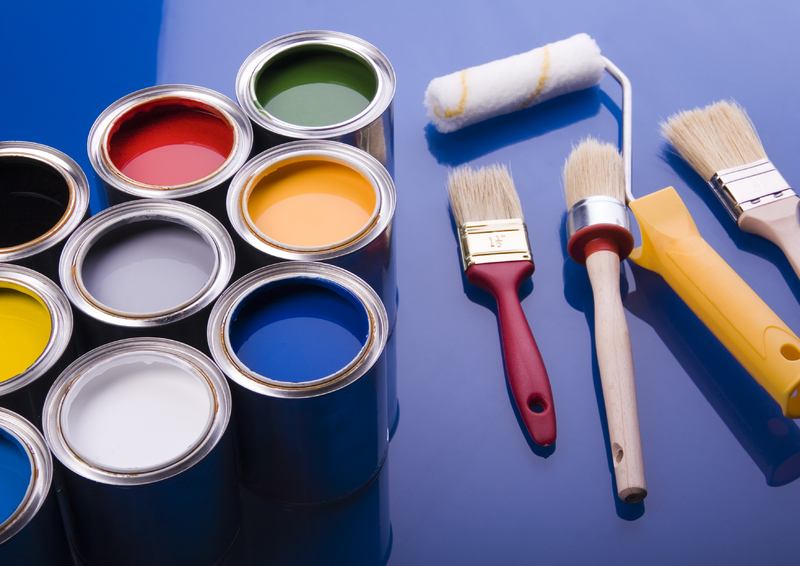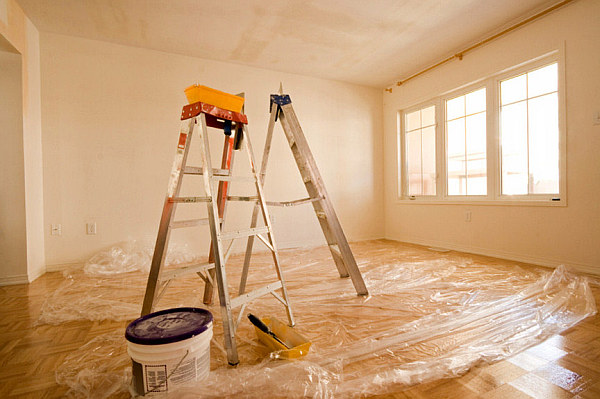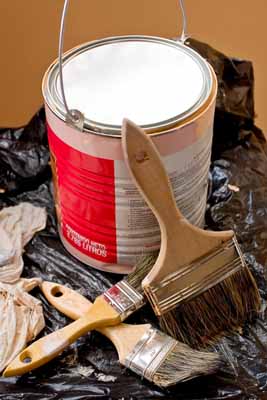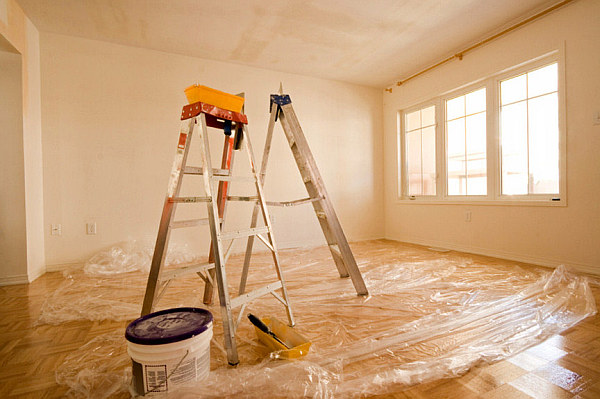Happy Tuesday, Guelph, Ontario! The last few days in March have shown us Guelphites that Spring is in the air and with April showers come the Spring fever induced home improvements!
When it’s time to make a change, one of the first DIY adventures that people embark upon is painting their most valuable possession: their HOME.
Painting can take you a few hours, a day or even more depending on what you are painting, what kind of paint/materials you are using and how much experience you are bringing to the figurative table.
Materials: Brushes and Techniques
When you start to paint, and as you get more experience, you will find that using brushes of all sizes and rollers is relatively easy. There ARE techniques to make the process even EASIER, though (which will result in a better finished product and less exhaustion from the budding Michaelangelo’s out there.
“The grip you use depends on the brush you’ve chosen. Trim and sash brushes with pencil handles are grasped much as you would a pencil, with the thumb and the first two fingers of the hand. This technique gives you excellent control for intricate painting. With beaver-tail handles on larger brushes, you’ll need a stronger grip because the brushes are wider and heavier. Hold the handle with the entire hand, letting the handle span the width of your palm as you would hold a tennis racket. This technique works best when you’re painting large, flat surfaces.”
What is your goal? NOT getting paint all over the floor OR yourself and getting that paint onto the walls and it should only take you a few minutes to figure out how to do this.
TIP: Start the job by dampening the bristles of the brush (with water for latex or the appropriate thinner for other types of paint) to condition them and make them more efficient. Remove excess moisture by gently striking the metal band around the handle’s base against the edge of your palm and into a sink or bucket.
For the first dip, move the brush around in the paint to open the bristles and let the paint cover the brush. It will be much easier if you ‘jab’ the brush gently into the paint with each dip. With most latex paints, you can simply dip the brush and let the excess paint drip off for a few seconds before moving the brush to the wall (although some thinner paints may force you to gently slap the brush against the inside of the paint can, or lightly drag the brush along the inside of the paint can to remove the excess paint). 
“To neatly paint up to a line where two edges or colors meet, called “cutting in,” use a trim brush with beveled bristles (the end of the brush resembles a chisel). Paint five or six strokes perpendicular to the edge of the ceiling or the wall. Next, smooth over these strokes with a single, long stroke, painting out from the corner first, then vertically. Where the wall and ceiling come together, use downward strokes on the wall first followed by smooth horizontal strokes.
On the ceiling itself, cut in strokes toward the center of the room, away from the wall. Then paint a smooth horizontal stroke on the ceiling that follows the direction of the wall. Even if you’re using the same color of paint on adjoining surfaces, follow this method of cutting in with 2-inch-wide borders rather than just plopping a loaded brush directly into a corner. This will prevent drips, sags, and runs.”
TIP: To cut in at a corner, paint out from the corner for five or six strokes, then smooth over them with a single, long, smooth stroke.©2006 Publications International, Ltd.
“Another cutting-in approach, beading, can practically eliminate the need to use masking tape to protect one painted area from another. Use a beveled trim brush with nice long bristles. Hold the brush so that your thumb is on one side of the metal ferrule and your fingers on the other. Press the brush lightly against the surface, then, as you move the brush, add just enough pressure to make the bristles bend away from the direction of your brushstroke. Keep the brush about 1/16 inch away from the other colored surface. The bent bristles and the pressure will release a fine bead of paint that will spread into the gap.
With both methods of cutting in, but especially when you’re dealing with two colors, it’s better to have a brush that’s too dry than one that’s too wet.”
For more information on home improvements, Real Estate, Buying/Selling or Guelph, in general, please get in touch today! 519-400-8394 or Krys@KrystalMoore.com
Royal Lepage Royal City Realty, Brokerage
Independently Owned and Operated
214 Speedvale Ave. W.
Guelph, ON N1H 1C4
Phone: 519-821-6191
Direct: 519-400-8394
Fax: 519-821-6764
Email: Krys@Krystalmoore.com
Email: Kmoore@rlproyalcity.com
I have over 15 years’ experience in Sales and Customer Service, I am motivated, dedicated
and have a solid background in law. I consistently go above and beyond to make my clients
feel important, valued and appreciated!
Want to know Moore?
![]() www.facebook.com/KrystalMooreRealEstateSales
www.facebook.com/KrystalMooreRealEstateSales
www.facebook.com/GuelphFirstTimeHomeBuyers
www.KrystalMoore.com
The information provided here has been compiled from TLC’s ‘How Stuff Works’ http://tlc.howstuffworks.com/home/how-to-paint-room.htm









